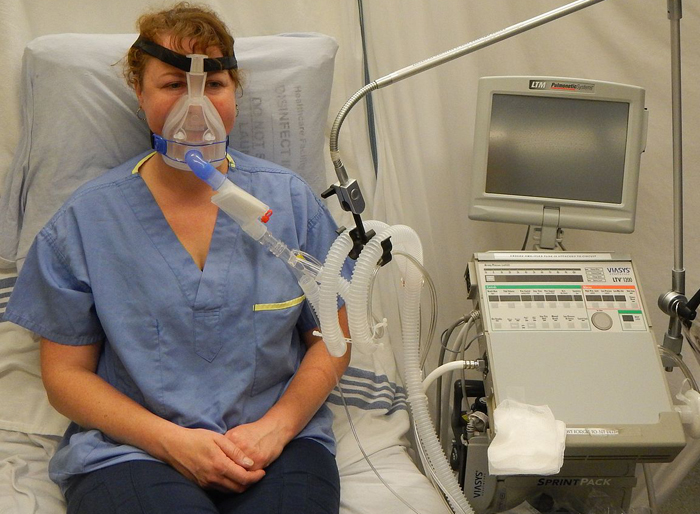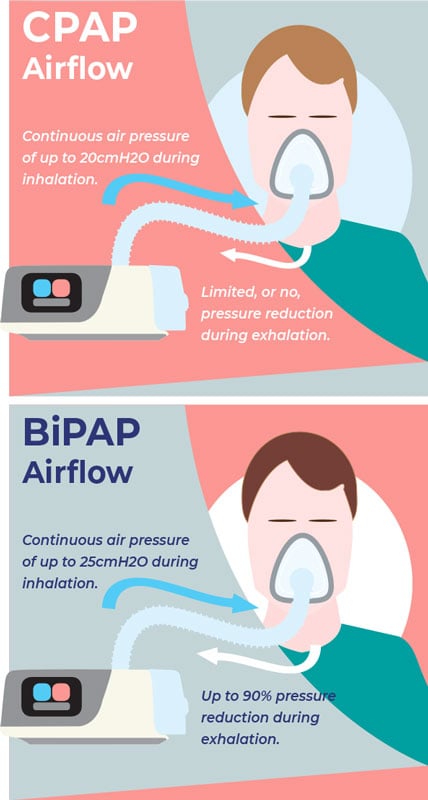Bipap vs. CPAP: Which Is the Best for Your Rest Disorder?
When navigating the complexities of sleep disorders, the option between BiPAP and CPAP therapy is a vital factor to consider. Each technique offers unique benefits tailored to certain problems, yet the decision hinges on individual client needs and comfort degrees. While CPAP supplies a stable air flow appropriate for obstructive sleep apnea, BiPAP's twin stress setups might enhance convenience for those with even more intricate respiratory problems. Understanding these differences can substantially affect therapy efficiency, leaving one to contemplate which alternative absolutely straightens with their wellness demands and lifestyle.
Understanding Sleep Disorders
Rest conditions encompass a series of problems that disrupt regular sleep patterns, influencing both the quality and period of remainder. These conditions can materialize in different kinds, including sleeplessness, sleep apnea, narcolepsy, restless leg syndrome, and parasomnias. Each problem offers one-of-a-kind difficulties, commonly resulting in substantial daytime exhaustion, cognitive problems, and psychological disruptions.
Sleep problems is defined by trouble falling or remaining asleep, while rest apnea entails repeated disruptions in breathing during rest, typically resulting in fragmented rest. Narcolepsy, on the other hand, is noted by excessive daytime sleepiness and sudden sleep strikes. Uneasy leg syndrome creates uneasy experiences in the legs, triggering an uncontrollable desire to move them, which can also prevent the capacity to drop asleep.
The influence of sleep disorders prolongs past private health, affecting overall productivity, relationships, and quality of life. Understanding the details nature of each problem is critical for effective medical diagnosis and therapy. As rest health and wellness comes to be progressively recognized as a vital component of total health, dealing with these conditions is vital for improving both rest top quality and daily performance.
Just How CPAP Works
Continual Positive Air Passage Pressure (CPAP) therapy is regularly used as a primary treatment for obstructive sleep apnea (OSA) The system of CPAP entails making use of a maker that delivers a stable stream of air with a mask used throughout rest. This air flow keeps positive pressure in the airway, avoiding the collapse or blockage of the throat that can take place throughout rest.
When an individual breathes in, the CPAP equipment provides a continual circulation of air, making sure that the respiratory tract remains open - BiPAP Rental. This not only minimizes the signs and symptoms of OSA, such as snoring and disrupted sleep patterns, yet also reduces the associated health and wellness threats, including cardio complications and daytime fatigue
The stress settings on a CPAP equipment can be tailored to satisfy specific patient demands, typically identified via a sleep study. On the whole, CPAP therapy has actually been shown to dramatically improve the top quality of sleep and overall health and wellness for people experiencing from obstructive rest apnea.
Exactly How BiPAP Works
BiPAP, or Bilevel Positive Respiratory Tract Stress, is a specific form of non-invasive ventilation that is especially valuable for individuals with problems such as complex rest apnea or breathing disorders. Unlike CPAP, which supplies a constant stream of air at a solitary stress, BiPAP provides two unique pressure settings: a greater inspiratory stress for inhalation and a lower expiratory pressure for exhalation. This dual-pressure method enables for simpler breathing, decreasing the initiative called for throughout exhalation.
The device operates via a mask fitted over the nose or mouth, attached to a device that produces air pressure. When the person inhales, the equipment supplies the greater stress to assist with airflow, ensuring that the airway stays open. Upon exhalation, the equipment immediately decreases the stress, making it more comfy for the person to breathe out.

Key Distinctions In Between BiPAP and CPAP

In contrast, BiPAP (Bilevel Positive Respiratory tract Pressure) supplies two different stress settings: one for inhalation and a reduced one for exhalation. This dual pressure system enables for even more comfy breathing, especially for people who deal with breathing out against a constant stress. BiPAP is frequently suggested for individuals with complex rest apnea, persistent obstructive lung condition (COPD), or those who require additional support during sleep.
Additionally, the complexity of BiPAP devices commonly causes a higher cost and needs extra mindful titration than CPAP. BiPAP Rental. Recognizing these key distinctions can aid in acknowledging which gadget may be better for particular sleep conditions, setting the groundwork for educated treatment decisions
Selecting the Right Therapy
How can one identify one of the most suitable treatment for taking care of rest conditions? The decision in between BiPAP and CPAP treatment mostly hinges on the certain features of the rest problem, the person's general health and wellness, and their convenience with the tool. CPAP, which supplies a continual stream of air, is frequently recommended for obstructive sleep apnea (OSA) It maintains an open respiratory tract throughout sleep, efficiently protecting against hypopneas and apneas.
Conversely, BiPAP gives two degrees of pressure: one for inhalation and a reduced one for exhalation. This double pressure system is valuable for people with intricate sleep apnea or those who experience difficulty breathing out versus a constant stress. Furthermore, BiPAP is often recommended for people browse around these guys with breathing conditions, such as chronic obstructive pulmonary condition (COPD), where varying pressure setups can enhance comfort and conformity.
Ultimately, a detailed examination by a rest expert, including a sleep research, can help figure out which therapy straightens best with the individual's needs. Elements such as comfort, simplicity of usage, and particular clinical problems need to likewise be considered to optimize treatment end results.
Verdict
In summary, both BiPAP and CPAP serve distinct functions in the administration of sleep problems. CPAP is reliable for obstructive sleep apnea via constant air movement, while BiPAP offers dual stress settings that boost comfort for those with complicated sleep apnea or respiratory system issues. The selection in between these therapies ought to be directed by individual requirements and conditions, requiring an extensive examination by a sleep expert to make sure optimal therapy outcomes and enhanced high quality of sleep.

Generally, CPAP treatment has actually been shown to significantly boost the high quality of sleep and total health for individuals enduring from obstructive sleep apnea.
BiPAP is commonly suggested for patients with complicated sleep apnea, chronic obstructive pulmonary illness (COPD), or those that call for extra assistance during sleep.
CPAP is reliable for obstructive rest apnea through regular air movement, while BiPAP offers twin pressure setups that improve convenience for those with intricate rest apnea or respiratory problems.